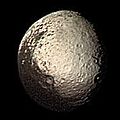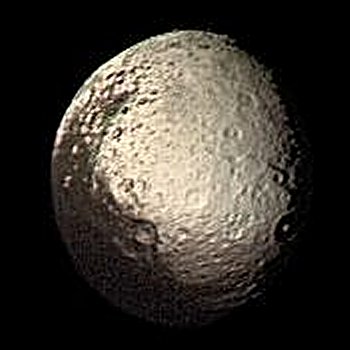Dosya:Iapetus by Voyager 2 - enhanced.jpg
Iapetus_by_Voyager_2_-_enhanced.jpg ((350 × 350 piksel, dosya boyutu: 19 KB, MIME tipi: image/jpeg))
Dosya geçmişi
Dosyanın herhangi bir zamandaki hâli için ilgili tarih/saat kısmına tıklayın.
| Tarih/Saat | Küçük resim | Boyutlar | Kullanıcı | Yorum | |
|---|---|---|---|---|---|
| güncel | 17.29, 4 Nisan 2005 |  | 350 × 350 (19 KB) | Smartech~commonswiki | *'''Iapetus by Voyager 2 spacecraft, August 22, 1981''' *same as Iapetus_by_Voyager_2.jpg but focused on the mooon and feature-enhanced. *original image caption: Saturn's outermost large moon, Iapetus, has a bright, heavily cratered icy terrain and a da |
Dosya kullanımı
Bu görüntü dosyasına bağlanan sayfa yok.
Küresel dosya kullanımı
Aşağıdaki diğer vikiler bu dosyayı kullanır:
- ar.wikipedia.org üzerinde kullanımı
- be-tarask.wikipedia.org üzerinde kullanımı
- be.wikipedia.org üzerinde kullanımı
- ca.wikipedia.org üzerinde kullanımı
- de.wikipedia.org üzerinde kullanımı
- el.wikipedia.org üzerinde kullanımı
- en.wikipedia.org üzerinde kullanımı
- eo.wikipedia.org üzerinde kullanımı
- es.wikipedia.org üzerinde kullanımı
- eu.wikipedia.org üzerinde kullanımı
- fr.wikipedia.org üzerinde kullanımı
- gl.wikipedia.org üzerinde kullanımı
- hr.wikipedia.org üzerinde kullanımı
- it.wikipedia.org üzerinde kullanımı
- ja.wikipedia.org üzerinde kullanımı
- ko.wikipedia.org üzerinde kullanımı
- la.wikipedia.org üzerinde kullanımı
- lb.wikipedia.org üzerinde kullanımı
- lt.wikipedia.org üzerinde kullanımı
- lv.wikipedia.org üzerinde kullanımı
- ms.wikipedia.org üzerinde kullanımı
- mwl.wikipedia.org üzerinde kullanımı
- no.wikipedia.org üzerinde kullanımı
- pl.wikipedia.org üzerinde kullanımı
Bu dosyanın daha fazla küresel kullanımını görüntüle.




